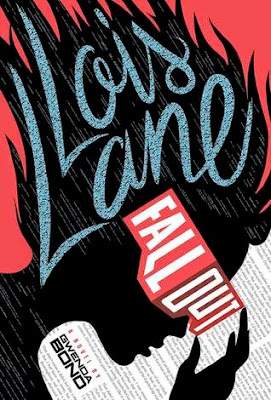 |
| Panel from Action Comics #1 |
The character of Lois Lane has morphed over the decades as the role of women in society has changed. That plucky girl reporter became an unsatisfied career woman in the ‘50s and ‘60s when women in the workplace were viewed more negatively in a post-WWII America. By the late ‘80s she regained her ‘30s spirit and the partnership between Lois and Superman’s alter ego, Clark Kent was emphasized. Their relationship was eventually the focus of the television series, Lois & Clark: The New Adventures of Superman (1993-1997).
 |
| Dean Cain and Teri Hatcher in "Lois and Clark," ABC Television |
Lois Lane has endured alongside Superman for over 75 years. Currently, she can be found butting heads with Clark at the Daily Planet or interviewing Wonder Woman, but always on the hunt for her next Pulitzer Prize winning story. Because of her lasting legacy, DC Comics has looked for opportunities to include Lois in other ways. Marvel has found some success in publishing novels featuring their female characters (The She-Hulk Diaries and Rogue Touch) as a way of targeting an audience that may never find themselves inside a comic shop. Last month, DC stepped into the arena of young adult novels with the publication of Gwenda Bond’s Lois Lane: Fallout.
Lois Lane: Fallout finds our titular hero back in high school. Army brat Lois has just moved with her family to Metropolis, a city where they hope to finally put down some roots. Lois’ only goal is to make it through a year of school without getting into or otherwise causing trouble, but a chance meeting with Daily Planet editor, Perry White, sets her on a perilous path. Given a spot on the news team of Planet’s online sister paper, the Daily Scoop, Lois begins investigating the virtual reality video game, “Worlds War Three” that has swept the student body and the cyber-bullying subculture that goes along with it, but she quickly finds herself running afoul with the school principal. With the help of her new classmates and her mysterious chatroom friend known only as “SmallvilleGuy,” Lois has to use all her wits to unravel this conspiracy.
I feel a little divided about this book. On one hand, I thought the story was a bit of a hot mess. A lot of the conflict involved this virtual world which required clunky descriptions of “holosets” and characters' avatars. The penultimate set piece was a confusing confrontation between Lois and the CEO of a generic sounding corporation called Advanced Research Laboratories. On the other hand, this version of Lois Lane is really excellent. She’s intelligent, resourceful, and not afraid to break a few rules to find the truth. That’s a trait of modern-day Lois I really like. Her stubborn determination leads her to do whatever it takes, even if it means operating outside the lines. It juxtaposes well with Clark Kent’s “Golden Boy” persona.
It’s my understanding that this is actually the first title in a planned series. While I’m not completely fangirling over this book, I enjoyed it enough to be interested in reading a sequel. The inevitable meeting between Lois and her “SmallvilleGuy” has great story potential, so I look forward to future installments.
Interested in learning more about Lois? DC published a collection of Lois Lane centered comics for her 75th Anniversary. Lois Lane: A Celebration of 75 Years includes issues from the ‘30s and ‘40s all the way through the modern iteration of the character and makes for a decent survey of her long history.
Additionally, and this will probably ding my comics cred but, I always liked Erica Durance’s portrayal of Lois Lane in the later seasons of Smallville. Seasons 8, 9, and 10 have some great moments between her and Clark at the Daily Planet that make for a fun watch.
~Meredith


For some of us, the only true Lois Lane is Noel Neill, who played opposite George Reeves in the 1950s Superman TV show: http://media-cache-ak0.pinimg.com/736x/dc/b0/a1/dcb0a1db1815854358e09599a4db30bb.jpg
ReplyDeleteShe always wore a hat.